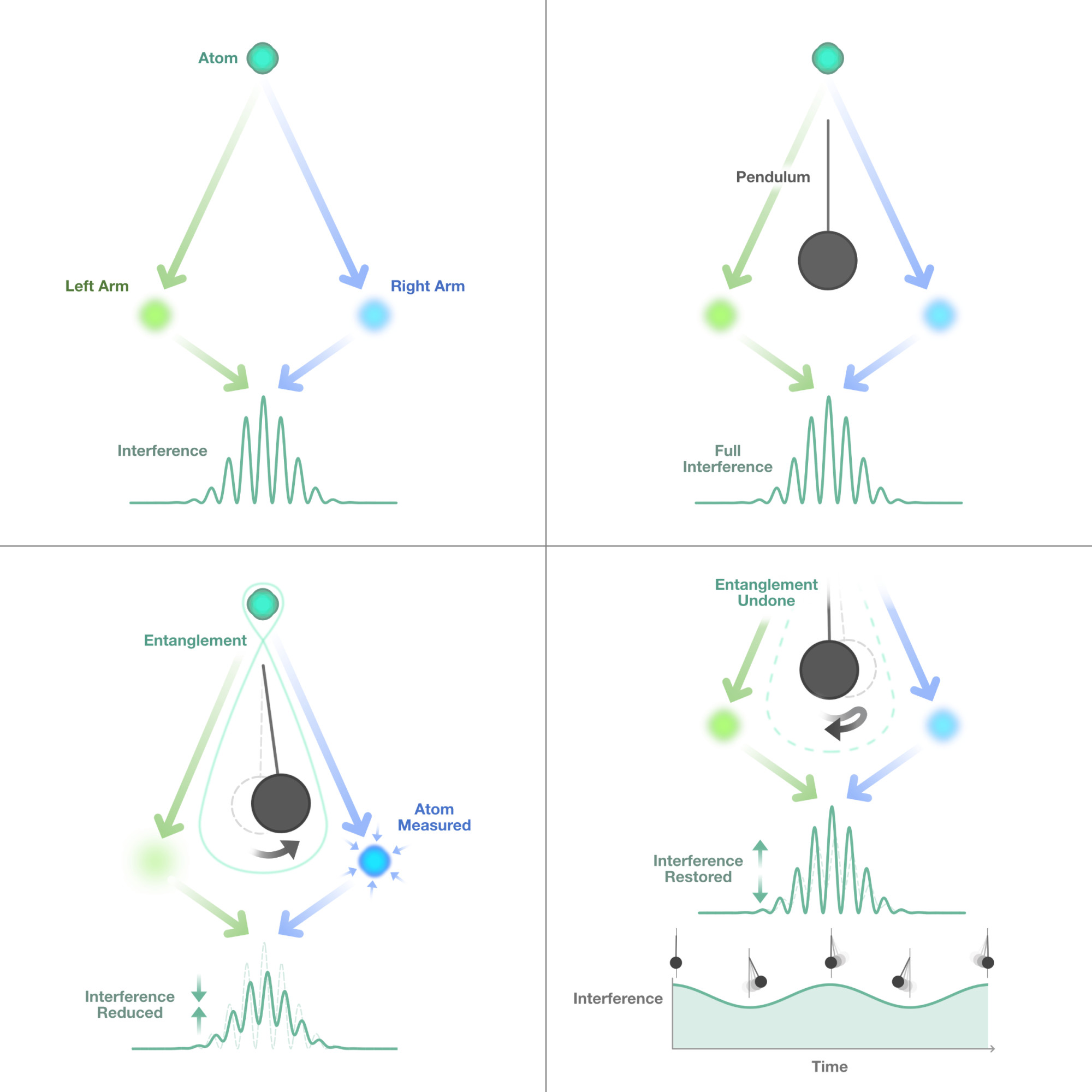Measuring Quantum Gravity with Entanglement
- A 4-panel comic to explain a NIST research proposal for detecting quantum gravity through entanglement.
- Client
- NIST
- Date
- July 2021
- Categories
- Diagram
- Link
- https://www.nist.gov/news-events/news/2021/08/exploring-quantum-gravity-whom-pendulum-swings
Project Notes
The captions for the panels:
- In an atomic interferometer, the atom's wave function is split into left and right arms. The left and right arms are then recombined, producing an interference pattern.
- When the experiment begins, the atom's wave function is unaffected by the pendulum. This means the two arms of the single atom interfere fully with each other.
- If gravitational attraction indeed causes an entanglement between the pendulum and the atom, the pendulum will partially measure the position of the atom, concentrating it into one arm or the other.
- After each half oscillation period, the pendulum will return to where it started, losing all memory of the gravitational entanglement it had created and restoring full interference.
